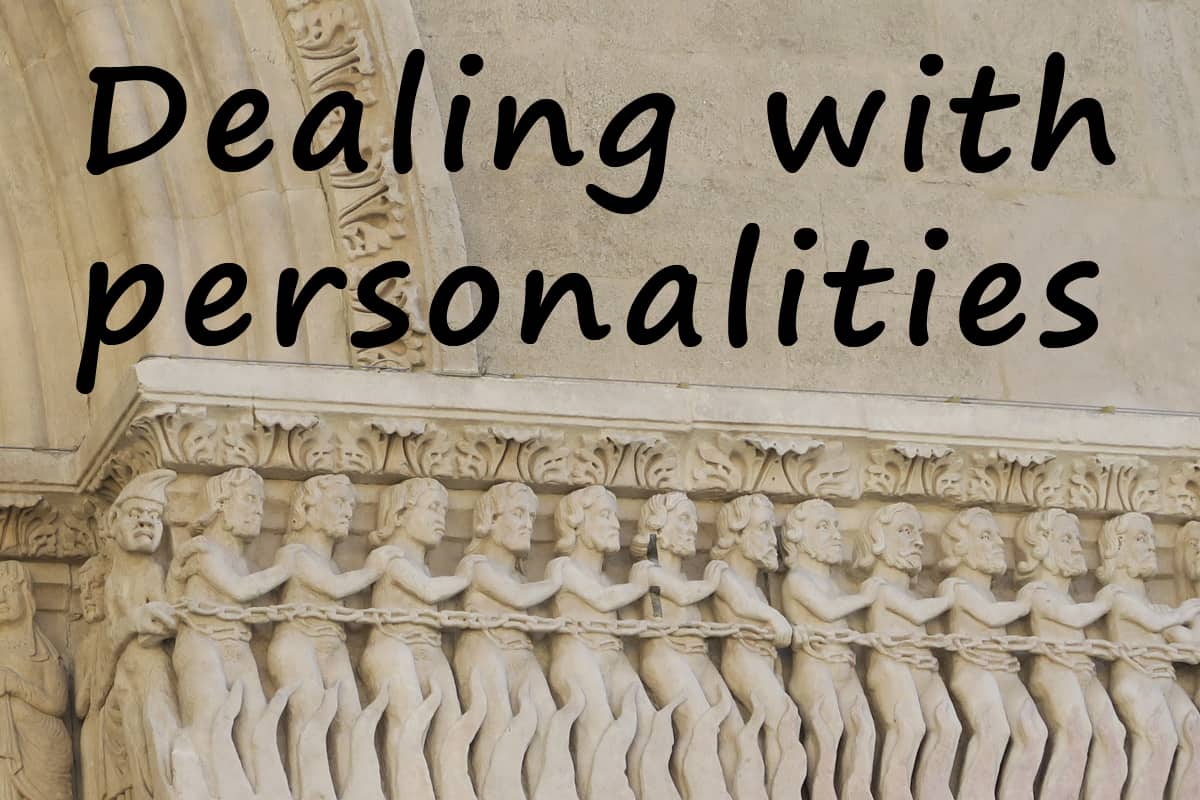You have probably worked with people who have different personalities. Some people are pleasant and cheerful, some are abrupt and possibly even nasty, some are focused, some are scattered…if you want to be a successful Project Manager it helps to have some insight on how these “types” affect your role.
Personality Types and Learning Styles
There are many books and programs that help to distinguish learning styles, behavioral variations, developmental stages, and functional capacity. Each one of these can shed light on the people who work with you—and maybe on you, too. Let’s see how awareness of these differences can enhance your ability to keep a project on track.
How much you will be affected by personalities is a function of the scope of the project. If you are the only one involved your own personality will be a factor in your success—or failure to achieve your goal. If your project involves others you may have to deal with challenges that are unique to each individual.
What works with one person may be the worst strategy to use with the next person. This article is not a psychology primer; the examples are intended merely to illustrate the points made. There are wonderful books and articles available that focus on observations about human behavior. That said, let’s look at a few examples of how these variables can affect your project.
Introverts and Extraverts
Most people have some familiarity with the concept of introverts and extraverts. Some people enjoy making friends and having casual conversations; other people seem shy and prefer working alone. Your job as the Project Manager is to be aware of these differences and keep the job on target.
If you estimate the amount of time it takes to hire someone to do a task you may not know that they will spend the first hour chatting with the client before they get started. They are “on the job” but your schedule is slipping. If the painter shows up at 8:00 am to paint but doesn’t start until the client has offered coffee, revisited the color selection, and commented on the weather—that painter may not finish in the estimated time.
On the other hand, if the painter is not willing to chat with the client there may be friction and poor communication. This can also have negative consequences. Both parties have personalities, and they may not mesh well. Many remodeling contractors have a line-item in their estimate for dealing with specific clients.
Some clients avoid conflict and cooperate, some clients are stressed and create frequent interruptions, and some clients will shift from pleasant to belligerent quickly if they think something is going wrong. The same can be true of employees or subcontractors, and you don’t always know their long-term style if you haven’t had much contact before they become part of your project.
Identifying Toxic Personalities
Think of these two nominally opposite types as being a continuum. There are some people who are absolutely sterling to work with—they know their job and can work with a wide range of people. Those on the opposite end of this spectrum may (or may not) be technically good at their task, but interacting with them can be almost frightening. Some are confrontational, and if they are also racist or sexist the relationship can become toxic. The trick as a manager is to know when to accommodate these people and when to remove them from the project—or be able to avoid involving them in the first place.
If someone is technically excellent but not a “people person” one option is to isolate them so they can work in peace. In a construction project that might mean making sure the plumber is done with the rough-in before the cranky electrician comes out to pull wire. For a business project it might mean communicating electronically with the software engineer instead of having him attend all the general meetings. Never allow abusive behavior to continue unchecked. It will get worse, the stakes will get higher, and someone may get hurt.
Learning Styles
Not all differences are at opposite ends of a spectrum. You can reduce conflict and build strong, positive relationships by assessing different styles and adapting your requirements to allow them to shine. There are several ways to process information, and most people have a preference. Some prefer auditory learning; they listen closely and retain verbal instructions well. Others prefer visual cues, such as written instructions and explanatory graphics. Most people who work with their hands are kinesthetic learners and want to “learn by doing.”
The project itself may dictate the kind of people you are using. If you want to build a house you will need framers to build the structure. They are physically active and willing to take risks. They are typically kinesthetic learners and their lifestyle reflects these preferences. An experienced framer knows what to do and wants to get to work.
A creative project may benefit from daydreaming, brainstorming, and changing direction often until the final design is settled. This approach can drive framers nuts—the last thing they want to do is have ambiguity in their assignment. They may be able to solve a tactical problem in a creative way, but they suffer when there is no clear direction. The creative person may chafe at rigidity, with no opportunity to think “outside the box.”
Team Structure
Experienced Project Managers working with a known team have usually sorted these distinctions in advance. They will have included understanding and accommodation of individual differences in subtle ways. The risks arise if there is a change in the team’s structure. Expanding the project scope may bring in additional players, and losing a team member also means a loss of that person’s knowledge of the history, details, and expectations of the project. A change in one component of the team will change the dynamic for other members as well.
An interesting discussion about the effects of personality types can be found in What Color is Your Brain: A Fun and Fascinating Approach to Understanding Yourself and Others, by Sheila N. Glazov. Starting with the Myers-Briggs Type Indicator, developed in the 1940s, she has created a tool that allows people to assess themselves and identify with one of four “brain colors.”
The colors are used to simplify remembering the characteristics they represent, and do not carry judgmental baggage. It says “here are four different types and why they are each valuable in society.” If you study the four types you will learn to recognize the patterns in human behavior and can use this information to learn to better interact with people more effectively.
Personalities are affected by many factors: history, religion, education, parenting, friendships, experiences, health…the list is endless. The same person can be different depending on mood, sleep schedules, recent events, time of day, the amount of work they are juggling at any one time, and—specifically—how well they relate to YOU, the Project Manager.
You don’t have to be a victim of these different types; you can learn to deal with them in ways that keep them on track with others and the project tasks. On the other hand, occasionally someone is toxic enough that it’s worthwhile to replace them. The challenge is knowing when to accommodate and when to draw the line. Becoming aware of the differences in human personalities and how to work with them can distinguish an exceptional Project Manager from an ordinary one. Learning about these types is worth the investment in time and awareness. In some cases it can literally save your project.

